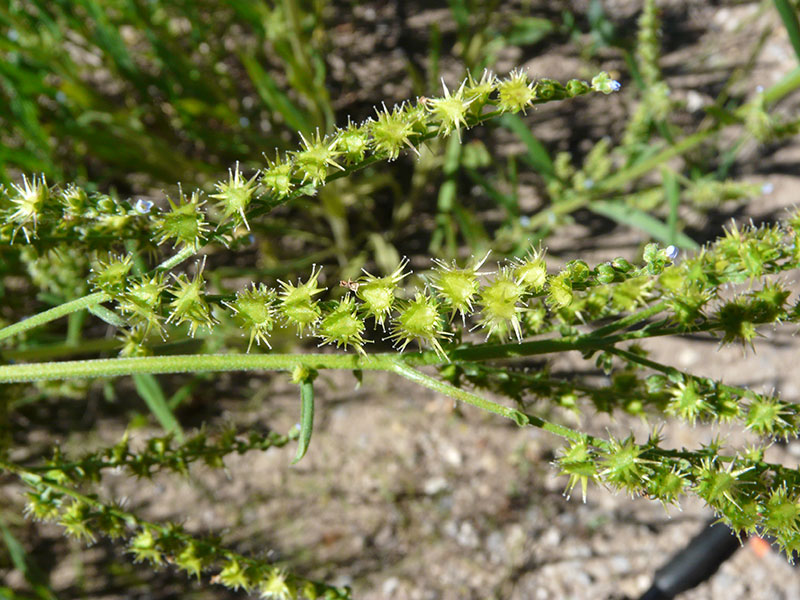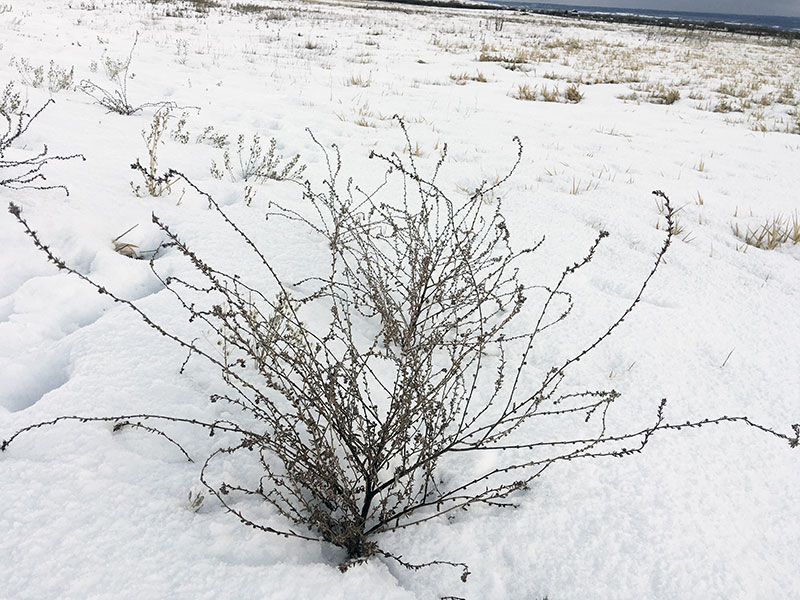Hackelia micrantha / Jessica sticktight
- teeny blue flowers with yellow/white centers
- flowers appear singly or in groups above developing fruit
- inflorescence mostly on one side of the stem
- lower leaves long and narrow; upper leaves fewer and sessile
- fruit a pointy and tenacious nutlet
Also known as: blue stickseed, meadow forget-me-not
Synonym: Hackelia jessicae
Hackelia micrantha is a short-lived perennial herb growing from a branched caudex to heights of 1 to 3 feet. On good sites, it can be quite lush. If you look elsewhere on the web for pictures of this, you will find lots of absolutely beautiful blue flowers. These are all a bit misleading because each of them is actually only about 1/8 inch across… they are teeny. But their brilliant color and the yellow or white “eye” makes them jump out. Although they may occur in a bunch, it seems that just as often there is just one or two at the end of the stem with the developing fruit below.
The erect stems of this plant are surrounded at the base by many oval-shaped to lance-shaped leaves, the longest up to 8 inches. In many settings, these are hard to see because of surrounding plants, but along trails, you might get the chance. The upper stems are generally leafless or with a few leaves, and hold the flowers on a cyme inflorescences. Like other members of the borage family, these tend to be on one side of the stem only. Each flower has five rounded lobes with a smaller petallike appendage at the base. Don’t even bother to try to see these without a hand lens.
The fruit is a nutlet with winged margins and numerous, nasty, pointed prickles. I chose a photo of these as the main image for the species because they may be the first thing you really notice.
Jessica sticktight grows in moist meadows with aspen, on moist slopes, and along streambanks in the mountains. Despite all this moisture-related stuff, it can also be found on rather dry hillsides, in fields and along trails. It is possible to confuse it with Hackelia floribunda which is similar but has a denser inflorescence, coarse hairs on the stems, and few or no prickles on seeds (I don’t believe that, but they are easier to get off and don’t hurt as much).
Finally, I have been unable to find out who “Jessica” might be. If you know, please tell me.
| Color | |
|---|---|
| Family | |
| Blossom size | |
| Inflorescence size | |
| Inflorescence type | |
| When? | |
| Where? | disturbed, exposed, forest gaps and roadsides, grasslands, meadows, roadsides, widespread |


